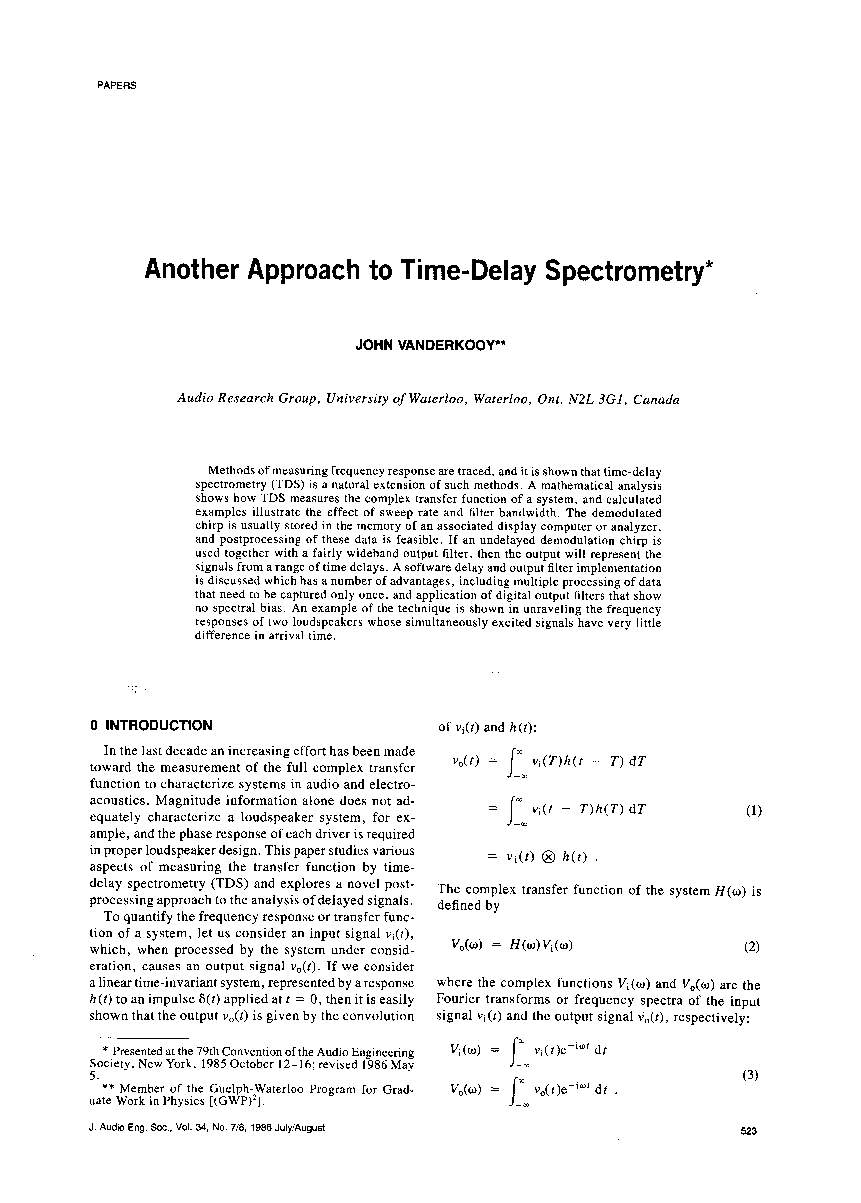Home / Publications / E-library page
You are currently logged in as an
Institutional Subscriber.
If you would like to logout,
please click on the button below.
Home / Publications / E-library page
Only AES members and Institutional Journal Subscribers can download
Methods of measuring frequency response are traced, and it is shown that time-delay spectrometry (TDS) is a natural extension of such methods. A mathematical analysis shows how TDS measures the complex transfer function of a system, and calculated examples illustrate the effect of sweep rate and filter bandwidth. The demodulated chirp is usually stored in the memory of an associated display computer or analyzer, and postprocessing of these data is feasible. If an undelayed demodulation chirp is used together with a fairly wideband output filter, then the output will represent the signals from a range of time delays. A software delay and output filter implementation is discussed which has a number of advantages, including multiple processing of data that need to be captured only once, and application of digital output filters that show no spectral bias. An example of the technique is shown in unraveling the frequency responses of two loudspeakers whose simultaneously excited signals have very little difference in arrival time.
Author (s): Vanderkooy, John
Affiliation:
Audio Research Group, University of Waterloo, Waterloo, Ont. N2L 3Gl, Canada
(See document for exact affiliation information.)
Publication Date:
1986-07-06
Import into BibTeX
Permalink: https://aes2.org/publications/elibrary-page/?id=5260
(1466KB)
Click to purchase paper as a non-member or login as an AES member. If your company or school subscribes to the E-Library then switch to the institutional version. If you are not an AES member Join the AES. If you need to check your member status, login to the Member Portal.

Vanderkooy, John; 1986; Another Approach to Time-Delay Spectrometry [PDF]; Audio Research Group, University of Waterloo, Waterloo, Ont. N2L 3Gl, Canada; Paper ; Available from: https://aes2.org/publications/elibrary-page/?id=5260
Vanderkooy, John; Another Approach to Time-Delay Spectrometry [PDF]; Audio Research Group, University of Waterloo, Waterloo, Ont. N2L 3Gl, Canada; Paper ; 1986 Available: https://aes2.org/publications/elibrary-page/?id=5260